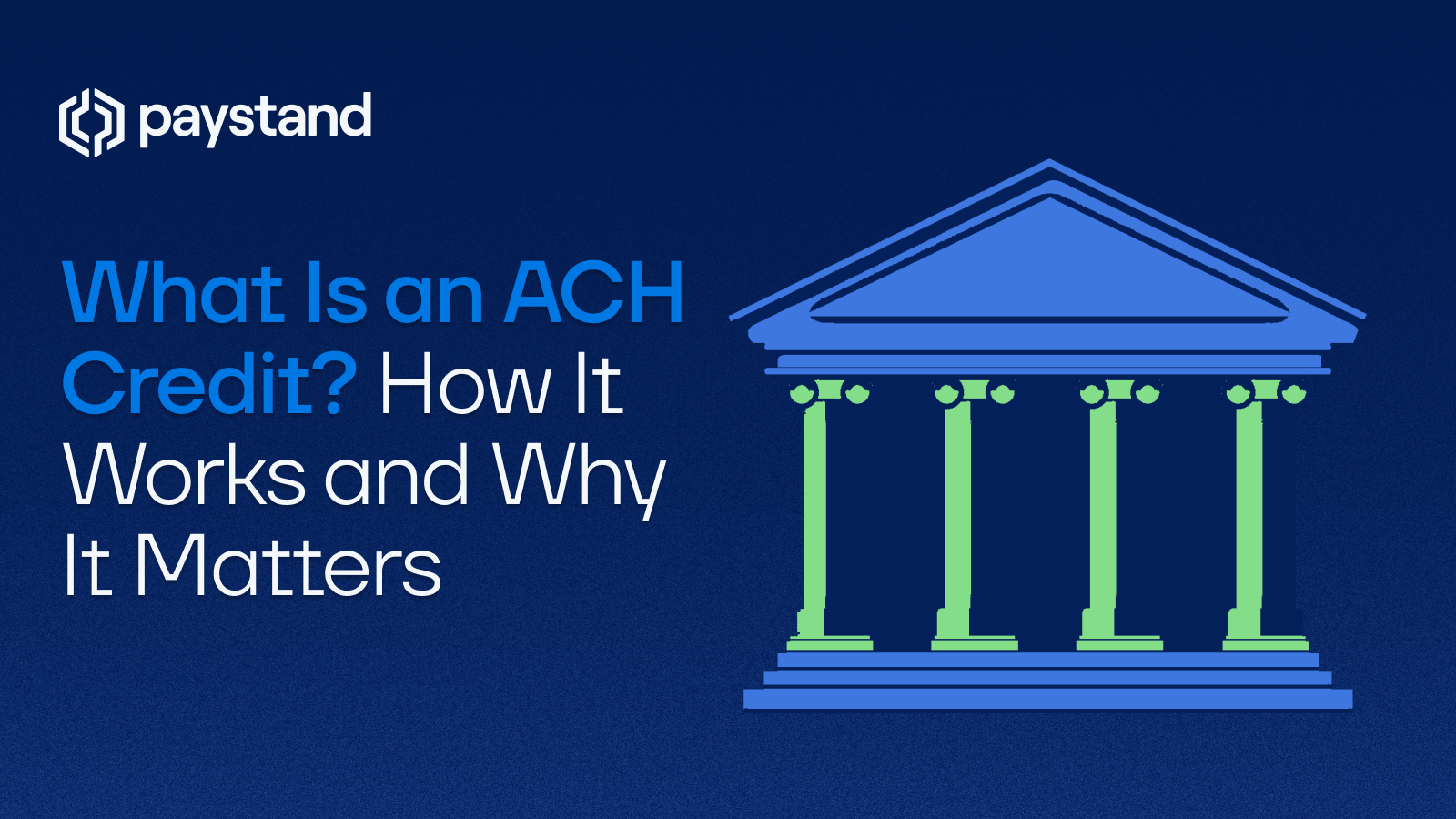What Is an ACH Credit? How It Works and Why It Matters

Table of Contents
- How ACH Credit Works
- Common Uses of ACH Credit
- How Do I Know Where an ACH Credit Comes From?
- What Is an ACH Credit Refund?
- ACH Credit vs. ACH Debit
- Why ACH Credits Matter for Businesses
Key Takeaways
- ACH credits push funds between bank accounts through the ACH network.
- They’re faster, cheaper, and more secure than paper checks.
- Common uses include payroll, vendor payments, and refunds.
- ACH credit refunds happen when funds are returned due to errors or disputes.
- The main difference between ACH credit and ACH debit is who initiates the payment.
- Automating ACH credits helps businesses simplify payments and improve cash flow.
Electronic payments have become the standard for businesses and consumers alike. One of the most common rails powering this digital shift is the ACH credit—a reliable, low-cost way to move money between accounts without paper checks or card fees.
This guide explains how ACH credit works, its most common uses, how to trace one, and what happens if a payment is refunded.
How ACH Credit Works
An ACH credit is a type of ACH payment that pushes funds from one bank account to another through the ACH network, managed by the National Automated Clearing House Association (NACHA).
Here’s what happens behind the scenes:
- The Originating Depository Financial Institution (ODFI)—the sender’s bank—initiates the funds transfer.
- The transaction passes through the ACH network in batches.
- The Receiving Depository Financial Institution (RDFI)—the recipient’s bank or credit union—credits the money to the recipient’s account number.
Unlike ACH debits, which pull funds from an account, ACH credits work by pushing money out. The sender initiates the payment, and the receiver simply receives it.
ACH credits usually clear in one to two business days, making them faster and cheaper than mailing a paper check.
Learn more about how digital rails streamline payments in our digital payments guide.
Common Uses of ACH Credit
ACH credit transactions are used in nearly every industry. Common examples include:
- Payroll deposits: Employers push salaries directly into employee accounts.
- Vendor payments: Businesses use ACH credits for recurring supplier invoices.
- Tax refunds and government benefits: Agencies distribute funds quickly and securely.
- Customer refunds or rebates: Companies push funds back to consumers without delays.
Because they’re electronic, ACH credits are ideal for recurring payments and high-volume B2B transactions.
For more on how these payments originate, see ACH originator.
How Do I Know Where an ACH Credit Comes From?
Every ACH credit includes details that help trace its origin. On your bank or credit union statement, you’ll typically see:
- The sender’s name or company
- A brief payment description (e.g., “PAYROLL,” “VENDOR PAY”)
- A transaction ID or trace number
- The routing number of the originating bank
If you need more information, your financial institution can contact the Originating Depository Financial Institution for confirmation.
To identify banks and issuers, you can use a bank identification number lookup tool.
If an ACH credit looks unfamiliar, it may involve an ACH return that reversed or corrected the transaction.
What Is an ACH Credit Refund?
An ACH credit refund occurs when funds previously sent are reversed or returned to the sender. This may happen when:
- The recipient’s account is closed or invalid
- The payment amount was incorrect
- A duplicate transaction occurred
- The receiver disputes the payment
The ACH process has defined timelines for refunds, usually within five business days for most standard errors.
Understanding refund rules helps finance teams maintain accurate records, especially when using temporary vs. permanent accounts for reconciliation. See our temporary vs. permanent accounts explainer.
ACH Credit vs. ACH Debit
The main difference between ACH credit vs. ACH debit lies in who initiates the payment:
- ACH Credit: The payer pushes funds to another account.
- ACH Debit: The payee pulls funds from the payer’s account (as with bill payments).
Both move through the ACH network and involve receiving from depository financial institutions, but credits give the payer more control and visibility.
For a closer look at how these systems connect, read our guide to the payment network.
Why ACH Credits Matter for Businesses
ACH credits are the backbone of modern finance operations. They:
- Reduce transaction costs compared to wires or cards
- Speed up reconciliation and reporting
- Lower fraud risk by reducing manual handling
- Simplify recurring or cross-bank payments
By automating ACH credit transactions, businesses can streamline cash flow, improve visibility, and reduce costs, without relying on outdated methods.
Learn how to maximize your payment strategy and boost profitability:
Download the Optimizing Payments for Profitability Whitepaper







%20(1)%20(1).jpg?width=100&height=100&name=IMG_3752%20(1)%20(1)%20(1).jpg)